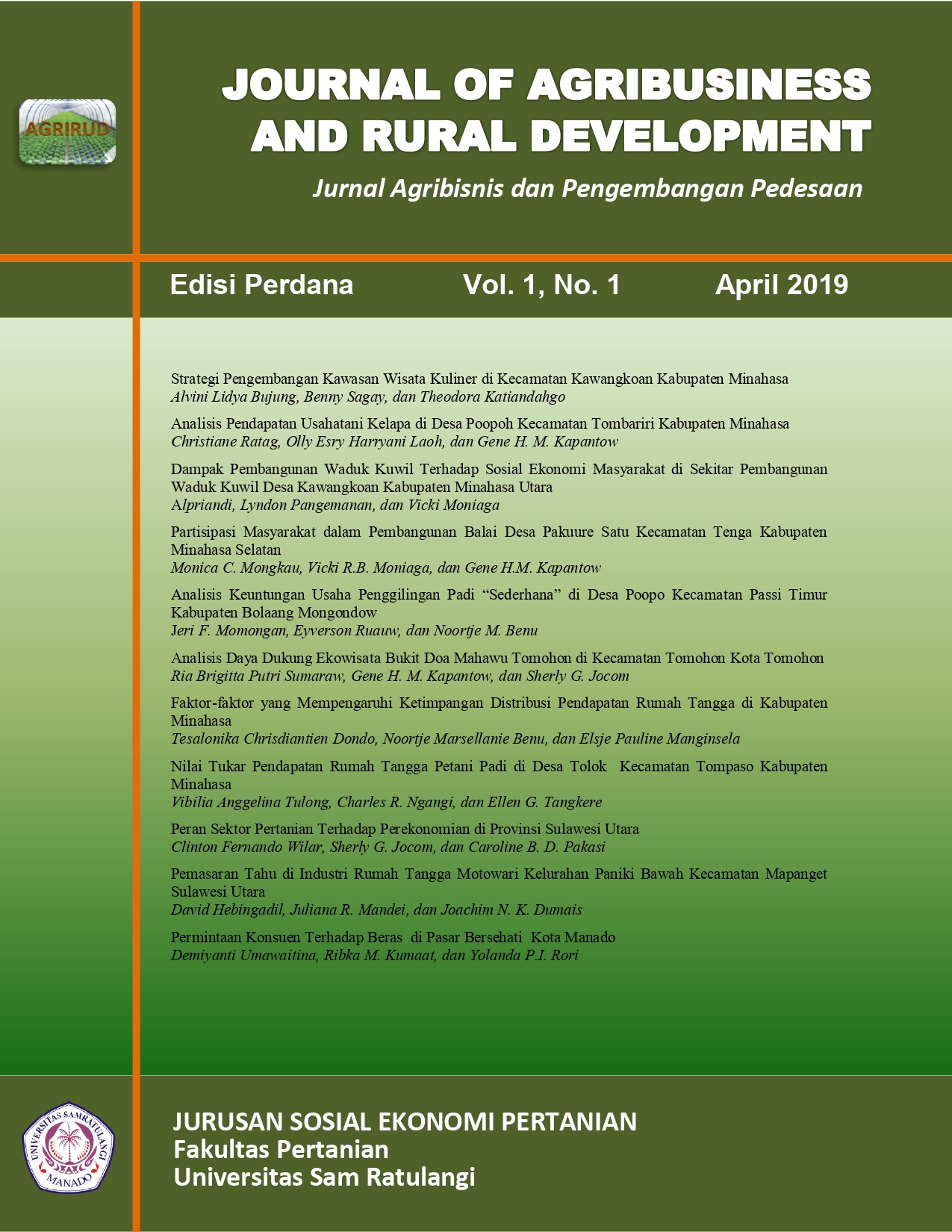STRATEGI PENGEMBANGAN KAWASAN WISATA KULINER DI KECAMATAN KAWANGKOAN KABUPATEN MINAHASA
DOI:
https://doi.org/10.35791/agrirud.v1i1.23542Abstract
The objective of this research in to develop culinary tourism areas in Kawangkoan District. This research was conducted for three months from December 2018 to February 2019 which began from preparation to reporting of research. Data collection includes primary data and secondary data. Primary data are data sourced from opinions and interviews obtained by distributing questionnaires to coffee house business owners, local government and customers / consumers in the culinary tourism area of Kawangkoan Sub-district. Whereas for secondary data, the data obtained from relevant agencies such as the internet and library resources or literature books. The research result showed that internal analysis of strategy factors (IFAS) and external factor strategy (EFAS) are Strengths = 2.185, Weakness = 1.179, Opportunities = 2.308, Threats = 1.769. The results of the analysis on the SWOT diagram obtained coordinates 1,006: 0,539 whose coordinates are in quadrant I, which is an aggressive strategy. In this position it is a very favorable situation for the development of culinary tourism areas in Kawangkoan sub-district because it has the opportunity and strength that tend to be large so that culinary tourism areas can take advantage of the opportunities that exist.
Keywords: Development Strategy-Culinary Tourim Area





